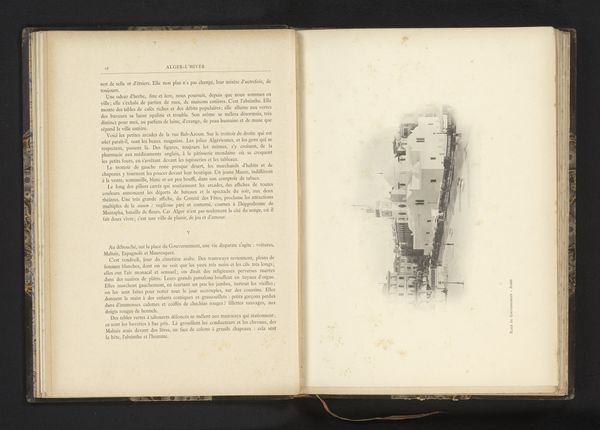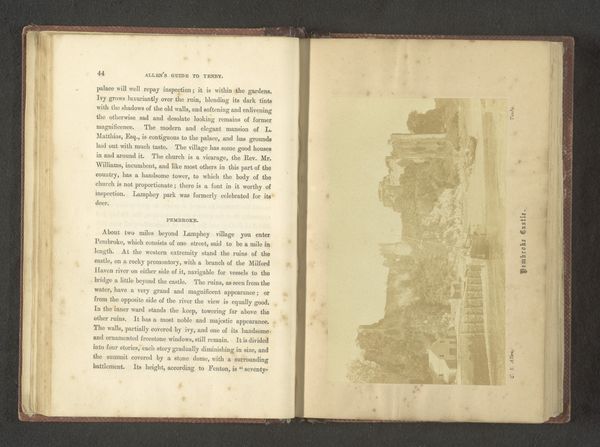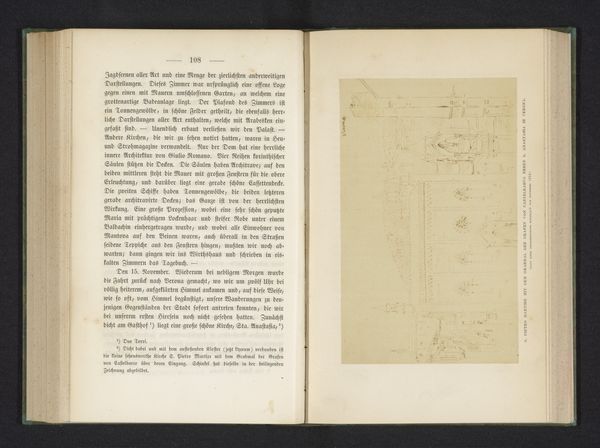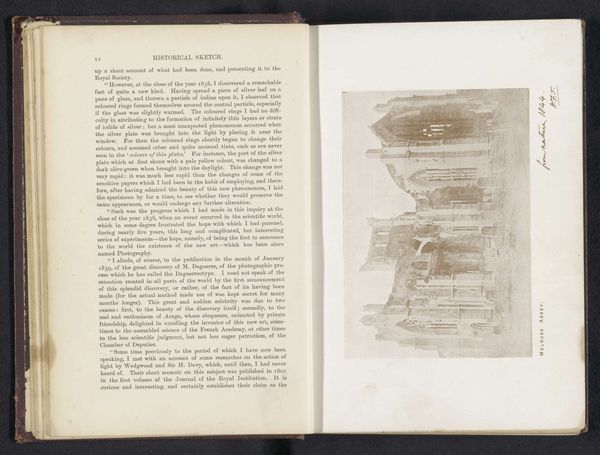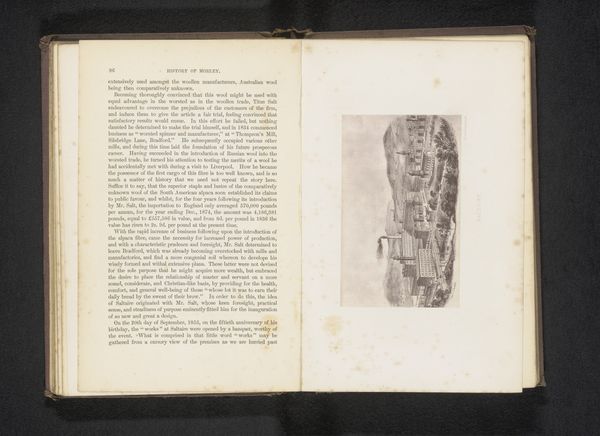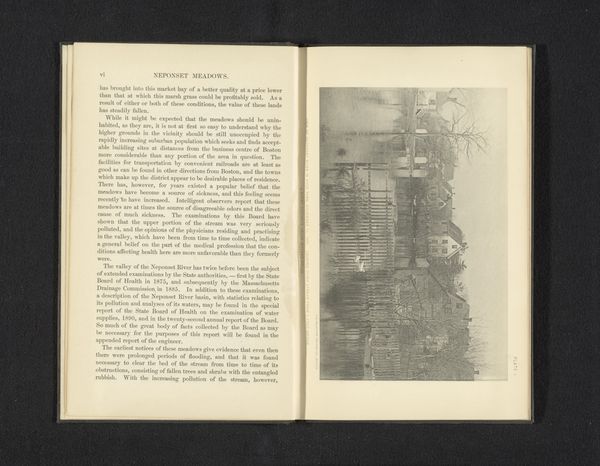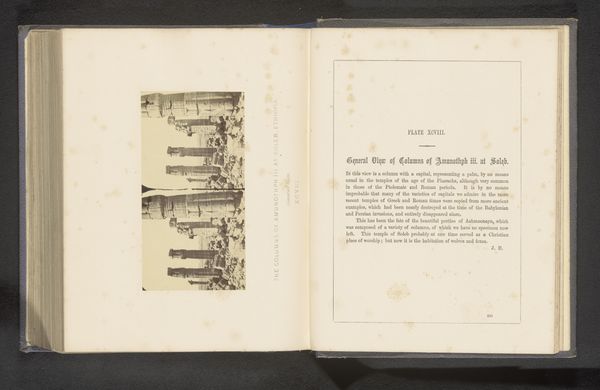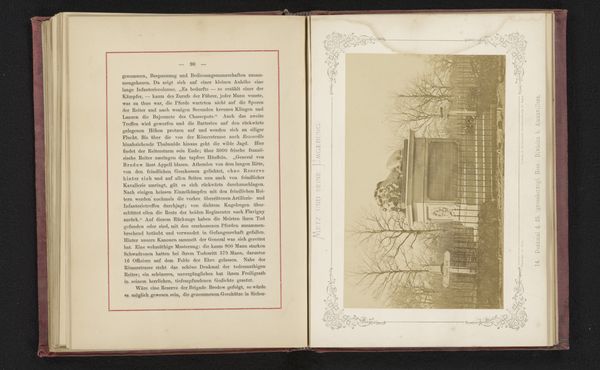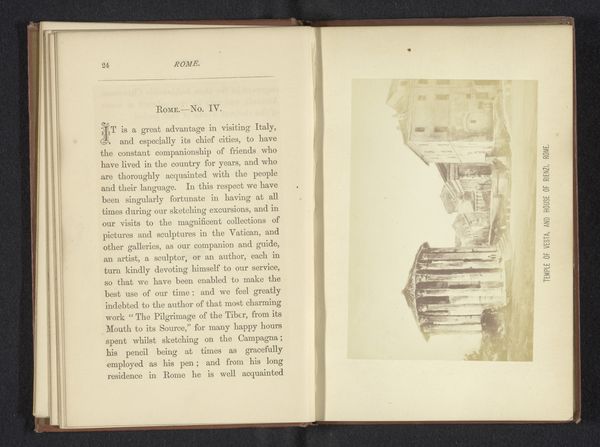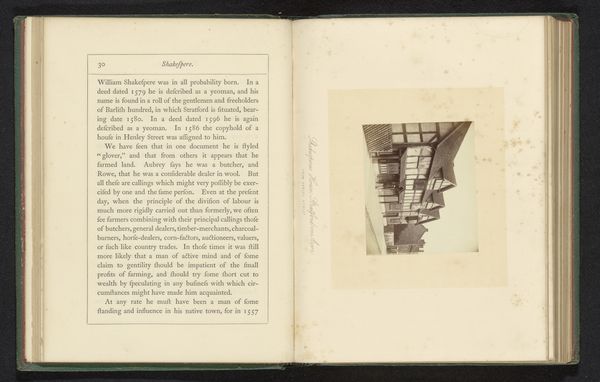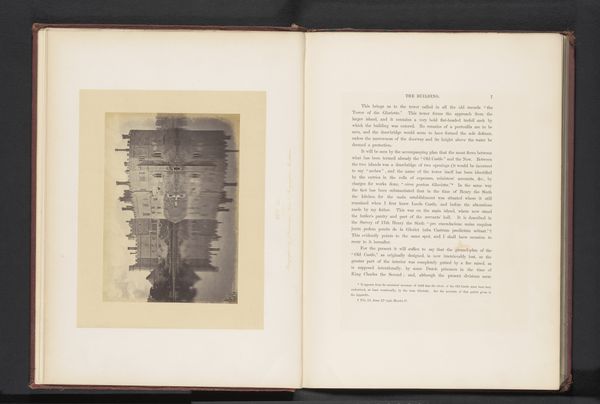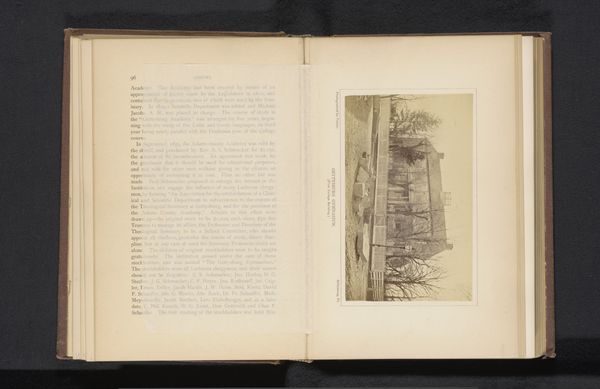
Fotoreproductie van een tekening van een gezicht op de Radcliffe Camera in Oxford before 1861
0:00
0:00
drawing, print, paper, photography
#
drawing
# print
#
landscape
#
paper
#
photography
Dimensions: height 99 mm, width 144 mm
Copyright: Rijks Museum: Open Domain
Curator: Editor: Here we have a photographic reproduction of a drawing of the Radcliffe Camera in Oxford, created before 1861. What strikes me is the composition. It’s set on a page of text, as if lifted directly from a book, creating an immediate relationship between text and image. What do you see in this piece? Curator: What immediately captures my attention is the interplay between the photograph as an object and the architectural drawing it reproduces. Note how the very texture of the photographic paper influences our perception of depth and line, flattening the nuances of the original drawing. Consider the formal qualities of this visual encoding: lines, light, contrast and tone values. Editor: That's an interesting point about flattening the drawing. The original must have had a very subtle depth that’s been lost here. Curator: Precisely. And observe the stark contrast between the detailed architectural rendition and the starkness of its material support; the page, the textual arrangement. It challenges the assumption of photography as transparent medium for documentary purposes, compelling us to evaluate its very objecthood and the constructed-ness of any system of representation. How does the texture itself impact your experience of the piece? Editor: I suppose the paper almost acts as a screen, reminding us of the mediation inherent in both the drawing and the photography. It keeps the Radcliffe Camera at a distance. The combination is unique. I would never think of a photorealistic image. I can appreciate the art, lines, color, but it does take distance to connect the photograph with artistic skills and expression. Thanks! Curator: Indeed. The piece is an intricate investigation of seeing, printing, and representation, a conceptual puzzle elegantly posed through purely formal means. It compels one to deconstruct systems of depiction while perceiving visual objects through philosophical insight.
Comments
No comments
Be the first to comment and join the conversation on the ultimate creative platform.
